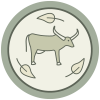
循环利用:加强循环利用意味着降低农业生产的经济和环境成本
浪费是一项人为提出的概念—在自然生态系统中并不存在浪费。生态农业方法通过模拟自然生态系统,支持推动在生产系统内进行养分、生物质和水分循环的生物过程,从而提高资源利用效率,并将浪费和污染降至最低。
循环利用可通过多样化并在不同组成部分与活动之间构建协同效应,在农场层面和景观范围内进行。比如,包括根系深植树木的农林复合系统能够捕获一年生作物根系无法吸收的养分。农牧系统通过利用粪便进行堆肥或直接施肥,并将作物残茬和副产品用作家畜饲料,推动了有机质的循环利用。养分循环占所有非供给性生态系统服务经济价值的51%,畜牧业的融入在其中发挥着主要作用。同样,在稻田养鱼系统中,水生动物协助对水稻作物施肥并减少有害生物,降低了对外部肥料或杀虫剂等投入品的需要。
循环利用通过闭合循环和减少浪费提供了多种惠益,降低了对外部资源的依赖,提升了生产者的自主能力,降低了面对市场和气候冲击时的脆弱性。循环利用有机质和副产品为生态农业创新提供了巨大潜力。
Database
The global impacts of the climate crisis are becoming ever clearer, and natural resources and ecosystems are being depleted. Despite some progress, hunger and poverty persist, and inequalities are deepening. The world is realizing that unsustainable high external inputs and resource-intensive industrialized systems pose a real danger of biodiversity loss,...
政策简报
2022
Feeding and nourishing a growing and changing global population in the face of rising numbers of chronic hunger, slow progress on malnutrition, environmental degradation, systemic inequality, and the dire projections of climate change, demands a transformation in global food systems. Policy change at multiple levels is critical for catalysing an...
工作文件
2019
The Proceedings book includes the contributions from agreocology experts and practitioners that took part as speakers in the International Symposium on Agroecology for Sustainable Agriculture and Food Systems in China held Kunming, Yunnan, China from 29-31 August 2016. The volume has been prepared in order to collect and disseminate further...
China
会议文件
2018
The aim of this study was to determine nitrogen use efficiency and reduce environmental pollution caused by excessive use of nitrogen fertilizer in pea-maize intercropping fields in irrigated areas of Hexi Corridor, Gansu Province. To that end, a field experiment was conducted in 2011 to determine the spatial and temporal...
China
杂志文章
2014
The Agroecology Criteria Tool (ACT) enables the assessment of a project through the lens of agroecology: it visualizes the degree to which a project, program or policy is aligned with the various dimensions of agroecology. The methodology is based on the analytical framework by Gliessman on the 5 levels of...
创新
2020
